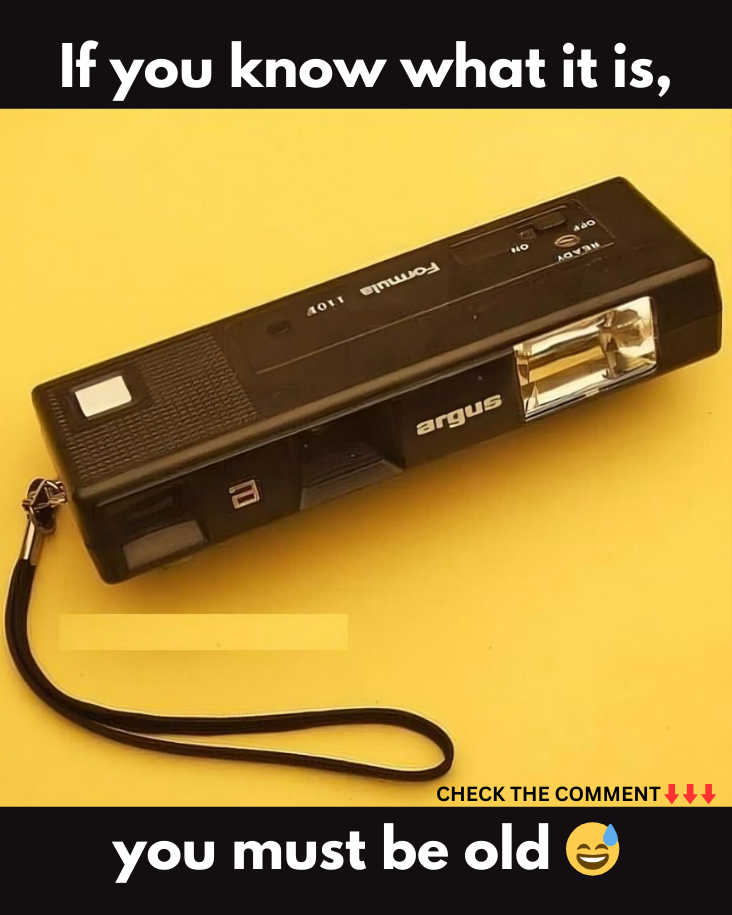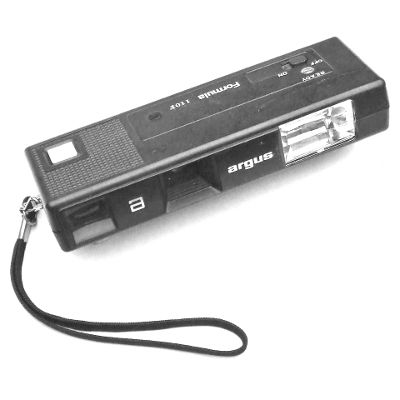In the history of photography, certain innovations have dramatically transformed the way we capture and preserve memories. One such revolution came with the rise of pocket cameras, with the Argus Formula 107 playing a key role. Compact, easy to use, and designed for the everyday consumer, the Argus Formula 107 was a camera that made photography accessible and portable. In this article, we explore the features of this iconic camera, its role in shaping the photographic landscape, and the lasting legacy of Argus as a brand.

The Appeal of Compact Cameras in the 1970s
Before digital cameras and smartphones put photography in everyone’s hands, there was a time when capturing a moment required film, bulky equipment, and technical know-how. The 1970s saw the rise of 110 film cameras, which were notable for their compact size and user-friendly design. These cameras, like the Argus Formula 107, simplified the process of taking photos, allowing more people to document their lives with ease.
The portability of these cameras was their standout feature. Unlike the traditional 35mm cameras, which required larger film rolls and came with cumbersome designs, the 110 film cameras were built to be carried around effortlessly. The Argus Formula 107, with its small size, quickly became a favorite for casual photographers who wanted to capture snapshots without dealing with the complexities of traditional cameras.
Features of the Argus Formula 107
What made the Argus Formula 107 such a game-changer in the 1970s? Its design, features, and ease of use all contributed to its popularity. Let’s dive into some of the key attributes that made this pocket camera a hit.
Compact and Portable Design
The most notable feature of the Argus Formula 107 was its compact size. It was designed to easily fit into a pocket or purse, making it ideal for spontaneous photography on the go. This portability meant users could take it anywhere, whether on vacations, outings, or everyday activities, and snap photos whenever the moment struck. The convenience of having a camera that didn’t require heavy equipment was a major selling point.
Built-in Flash System
In an era where most affordable cameras lacked built-in flash systems, the Argus Formula 107 stood out. It featured an integrated flash that allowed users to capture images even in low-light conditions. This flash was activated next to the lens and added versatility, ensuring that the camera could be used in a variety of lighting situations. The built-in flash made the Formula 107 an all-weather companion for photography, regardless of the time of day.

Ease of Use for Beginners
One of the Argus Formula 107’s major strengths was its simplicity. Designed with everyday users in mind, the camera was accessible even for beginners. It had basic controls for focusing and exposure, making it a true point-and-shoot device. Users didn’t need to understand the technical aspects of photography, like aperture or shutter speed. They could simply load the film, aim the camera, and click—a perfect solution for capturing candid moments effortlessly.
Use of 110 Film Format

The Argus Formula 107 used 110 film, a format introduced by Kodak in 1972. This film came in small, easy-to-load cartridges, which simplified the process of changing film rolls—a task that many found intimidating with traditional cameras. The convenience of 110 film matched perfectly with the camera’s compact design, offering an excellent balance between ease of use and quality of photos.
A Snapshot of the 1970s: Capturing Everyday Moments
During its peak, the Argus Formula 107 became an essential tool for documenting everyday life in the 1970s and 1980s. Whether it was family vacations, holidays, or impromptu moments at home, the camera enabled ordinary people to create lasting memories without the hassle of professional-grade equipment.
Pocket cameras like the Argus Formula 107 represented a democratization of photography. No longer did one need to be a professional photographer to capture high-quality images; this technology made it possible for anyone to preserve life’s special moments. As a result, the 1970s saw an explosion in amateur photography, with families proudly collecting photo albums filled with snapshots from their everyday lives.
The Legacy of Argus and the 110 Film Camera
Although 110 film and pocket cameras like the Argus Formula 107 are now obsolete, they left an indelible mark on the history of photography. Collectors and photography enthusiasts today still seek out vintage cameras like the Argus Formula 107, not only for their nostalgic value but also for their simplicity and functionality.
Argus, the brand behind the Formula 107, was a major player in the camera industry throughout much of the 20th century. Known for producing reliable and affordable cameras, Argus helped democratize photography in the post-war era. While the company no longer manufactures new models, its vintage cameras remain cherished pieces in the collections of photography lovers around the world.
Conclusion: A Revolutionary Camera That Made Photography Accessible
The Argus Formula 107 may be a relic of the past, but its influence on the world of photography endures. It was more than just a camera; it was a symbol of a new era where photography became accessible to the masses. Its compact design, ease of use, and innovative features made it the perfect tool for capturing life’s moments, whether big or small.
While modern smartphones and digital cameras have largely replaced film-based devices, the legacy of the Argus Formula 107 lives on. It reminds us of a simpler time when photography was about preserving memories, not perfection, and its impact on consumer photography remains significant.
As a collectible today, the Argus Formula 107 still holds a special place in the hearts of vintage camera enthusiasts. Its rise in the 1970s marked a turning point in photography, making it one of the most beloved pocket cameras of its time.

